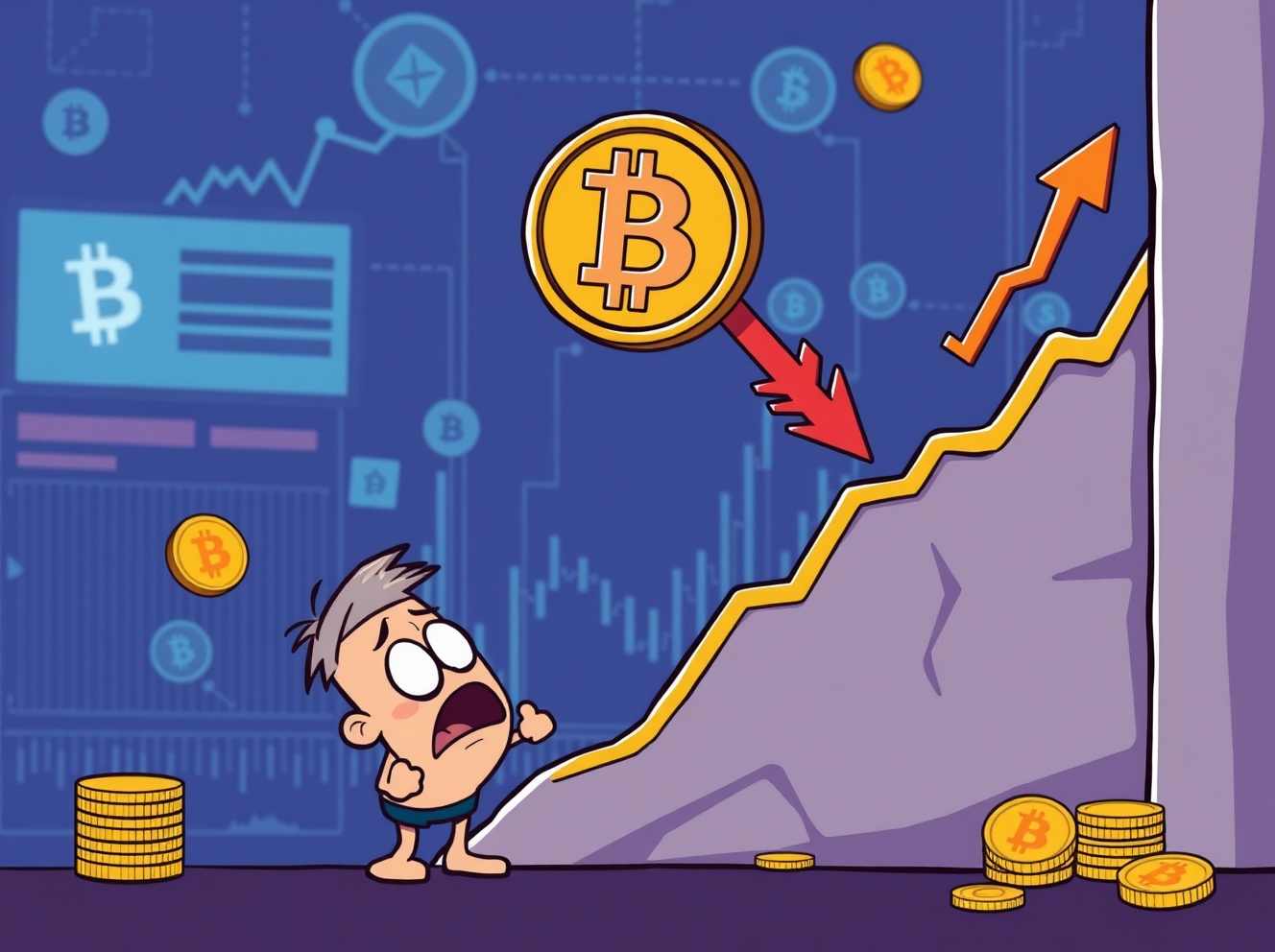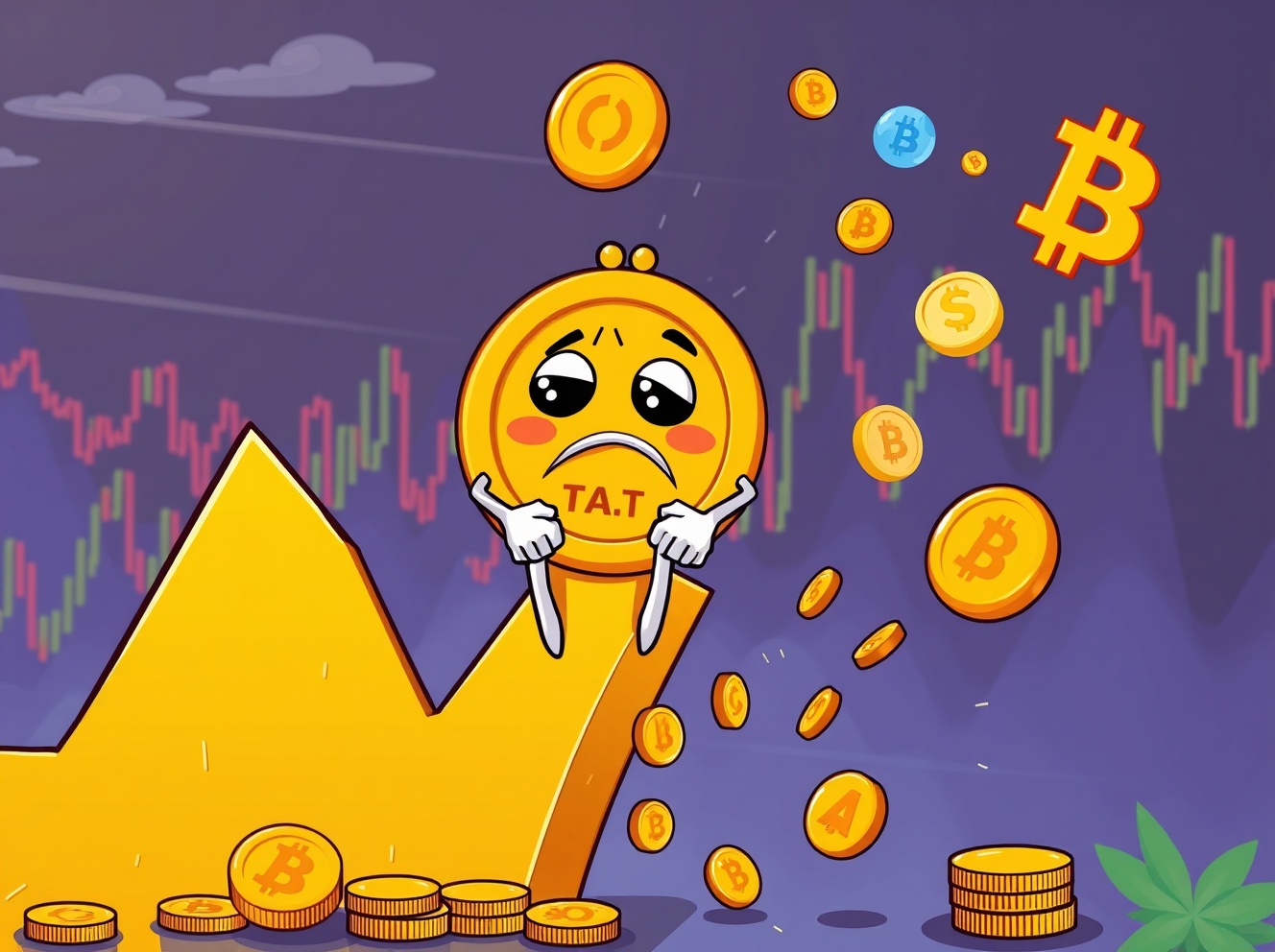Bitcoin volatility alert: Brace for turbulent price swings as key indicator flashes warning

Share:
BitcoinWorld
Bitcoin volatility alert: Brace for turbulent price swings as key indicator flashes warning
Are you prepared for Bitcoin’s next big move? Recent market signals suggest we’re heading into a period of significant Bitcoin volatility that could test even the most seasoned investors. The calm waters we’ve experienced might be giving way to turbulent seas ahead.
Why is Bitcoin volatility suddenly increasing?
The Volmex 30-day BTC Implied Volatility Index has broken its downward trendline, signaling a major shift in market expectations. This technical development suggests that traders are anticipating larger price swings in the coming weeks. When this key indicator changes direction, it often precedes actual market movement.
Jimmy Yang from Orbit Markets explains the underlying mechanics. “Early holders, miners, and large investors had been suppressing Bitcoin volatility through consistent call option selling,” he notes. However, as spot prices declined, these positions unwound, removing a crucial stabilizing force from the market.
What’s driving this Bitcoin volatility surge?
Several factors are converging to create the perfect storm for increased price swings:
- Reduced call option selling by major players
- Rising demand for downside protection through put options
- Weakening market liquidity conditions
- Ongoing macroeconomic uncertainty
This combination creates an environment where even small catalysts could trigger outsized moves. The removal of the volatility suppression mechanism means the market’s natural tendency for Bitcoin volatility is reasserting itself.
How should traders approach this Bitcoin volatility?
Increased Bitcoin volatility presents both risks and opportunities. For short-term traders, wider price swings can mean bigger profits but also larger losses. Position sizing becomes critically important during these periods.
Long-term investors might see this as a potential buying opportunity if prices dip significantly. However, the heightened Bitcoin volatility requires careful risk management and potentially wider stop-losses to avoid being shaken out by normal market fluctuations.
What does history tell us about Bitcoin volatility cycles?
Bitcoin has experienced similar periods of suppressed volatility followed by explosive moves throughout its history. These transitions often mark significant turning points in market trends. The current setup suggests we could be approaching another such inflection point where the extended period of relative calm gives way to more dynamic price action.
The key takeaway is that periods of low Bitcoin volatility rarely last forever. Markets naturally cycle between compression and expansion phases, and we appear to be transitioning into the latter.
Navigating the coming Bitcoin volatility storm
As we face this potential increase in Bitcoin volatility, remember that preparation is your best defense. Whether you’re a day trader or long-term holder, understanding the market dynamics at play can help you make more informed decisions. The coming weeks could test investor resolve, but they may also create exceptional opportunities for those who remain calm and strategic.
Frequently Asked Questions
What is the BVIV index and why does it matter?
The Bitcoin Implied Volatility Index measures market expectations of future price swings. When it breaks key trendlines, it often signals coming market turbulence.
How long might this increased volatility last?
Volatility cycles can last from several weeks to months. The current setup suggests we could see elevated volatility through the next options expiration cycle.
Should I sell my Bitcoin during high volatility?
That depends on your investment strategy and risk tolerance. Some traders thrive in volatile conditions, while long-term investors might use dips as buying opportunities.
What’s the difference between implied and realized volatility?
Implied volatility reflects market expectations of future price moves, while realized volatility measures actual historical price movements.
Can options trading really suppress Bitcoin volatility?
Yes, when large players consistently sell call options, it can create a ceiling effect that limits upward momentum and reduces overall price swings.
What other indicators should I watch during volatile periods?
Monitor trading volume, funding rates, open interest, and major support/resistance levels for additional context on market direction.
Found this analysis helpful? Share this Bitcoin volatility warning with fellow traders and investors on your social media channels to help them prepare for the coming market moves.
To learn more about the latest Bitcoin trends, explore our article on key developments shaping Bitcoin price action.
This post Bitcoin volatility alert: Brace for turbulent price swings as key indicator flashes warning first appeared on BitcoinWorld.
Bitcoin volatility alert: Brace for turbulent price swings as key indicator flashes warning

Share:
BitcoinWorld
Bitcoin volatility alert: Brace for turbulent price swings as key indicator flashes warning
Are you prepared for Bitcoin’s next big move? Recent market signals suggest we’re heading into a period of significant Bitcoin volatility that could test even the most seasoned investors. The calm waters we’ve experienced might be giving way to turbulent seas ahead.
Why is Bitcoin volatility suddenly increasing?
The Volmex 30-day BTC Implied Volatility Index has broken its downward trendline, signaling a major shift in market expectations. This technical development suggests that traders are anticipating larger price swings in the coming weeks. When this key indicator changes direction, it often precedes actual market movement.
Jimmy Yang from Orbit Markets explains the underlying mechanics. “Early holders, miners, and large investors had been suppressing Bitcoin volatility through consistent call option selling,” he notes. However, as spot prices declined, these positions unwound, removing a crucial stabilizing force from the market.
What’s driving this Bitcoin volatility surge?
Several factors are converging to create the perfect storm for increased price swings:
- Reduced call option selling by major players
- Rising demand for downside protection through put options
- Weakening market liquidity conditions
- Ongoing macroeconomic uncertainty
This combination creates an environment where even small catalysts could trigger outsized moves. The removal of the volatility suppression mechanism means the market’s natural tendency for Bitcoin volatility is reasserting itself.
How should traders approach this Bitcoin volatility?
Increased Bitcoin volatility presents both risks and opportunities. For short-term traders, wider price swings can mean bigger profits but also larger losses. Position sizing becomes critically important during these periods.
Long-term investors might see this as a potential buying opportunity if prices dip significantly. However, the heightened Bitcoin volatility requires careful risk management and potentially wider stop-losses to avoid being shaken out by normal market fluctuations.
What does history tell us about Bitcoin volatility cycles?
Bitcoin has experienced similar periods of suppressed volatility followed by explosive moves throughout its history. These transitions often mark significant turning points in market trends. The current setup suggests we could be approaching another such inflection point where the extended period of relative calm gives way to more dynamic price action.
The key takeaway is that periods of low Bitcoin volatility rarely last forever. Markets naturally cycle between compression and expansion phases, and we appear to be transitioning into the latter.
Navigating the coming Bitcoin volatility storm
As we face this potential increase in Bitcoin volatility, remember that preparation is your best defense. Whether you’re a day trader or long-term holder, understanding the market dynamics at play can help you make more informed decisions. The coming weeks could test investor resolve, but they may also create exceptional opportunities for those who remain calm and strategic.
Frequently Asked Questions
What is the BVIV index and why does it matter?
The Bitcoin Implied Volatility Index measures market expectations of future price swings. When it breaks key trendlines, it often signals coming market turbulence.
How long might this increased volatility last?
Volatility cycles can last from several weeks to months. The current setup suggests we could see elevated volatility through the next options expiration cycle.
Should I sell my Bitcoin during high volatility?
That depends on your investment strategy and risk tolerance. Some traders thrive in volatile conditions, while long-term investors might use dips as buying opportunities.
What’s the difference between implied and realized volatility?
Implied volatility reflects market expectations of future price moves, while realized volatility measures actual historical price movements.
Can options trading really suppress Bitcoin volatility?
Yes, when large players consistently sell call options, it can create a ceiling effect that limits upward momentum and reduces overall price swings.
What other indicators should I watch during volatile periods?
Monitor trading volume, funding rates, open interest, and major support/resistance levels for additional context on market direction.
Found this analysis helpful? Share this Bitcoin volatility warning with fellow traders and investors on your social media channels to help them prepare for the coming market moves.
To learn more about the latest Bitcoin trends, explore our article on key developments shaping Bitcoin price action.
This post Bitcoin volatility alert: Brace for turbulent price swings as key indicator flashes warning first appeared on BitcoinWorld.



